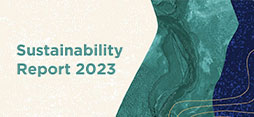11 January 2017
Asia – Coal’s future

Asia: Coal’s future | World Coal Association
As economies develop and the United Nations’ Sustainable Development Goals (SDGs) are realised, demand for energy will increase as more people move to cities for greater economic opportunity, modern amenities and access to education. Indeed, by 2050 the urban population of Asia is forecast to reach 65%. Coal will continue as a critical enabler of development and will continue as the fuel of choice for the rapidly urbanising and industrialising economies of this diverse continent.
Take India as an example. According to the International Energy Agency (IEA), 237 million people in India have no access to electricity. India’s residential electricity consumption– for those that have power – lags well behind the world’s average and is, according to the IEA, ten-times lower than that of OECD countries. For example, average residential consumption in Bihar is around 50 kilowatt-hours (kWh) per capita per year, which equates to an average household use of a fan, a mobile telephone and two compact fluorescent light bulbs for less than five hours per day. Add to that that 67% of India’s population rely on wood or animal dung to cook. This cannot continue to be the case.
Accessible energy and economic development
Improved energy access will drive economic growth. The Indian government has said that the country’s economy will more than double to $5 trillion in a ‘matter of years’. As it has in the past coal will act as the default energy source for electrification for India.
For a country like India, it’s not a choice between coal and renewables – both are needed and both will play a big role. Recently, China has shown how coal can play a critical role in lifting people out of energy poverty – out of the total population of 1.3 billion, only three million do not have access to electricity in China today.
As detailed in China’s climate pledge in the lead up to the Paris Agreement, coal will continue to play a vital role in the economy – not only in electricity generation but also in producing the materials for building modern infrastructure.
Why Southeast Asia continues to choose coal
It all comes down to cost.
The lifetime cost of electricity, taking into account capital construction cost, fuel costs, load factor, etc, from coal is routinely less than other technologies. For instance in China, high efficiency low emissions (HELE) coal technology costs five times less when compared to some renewables.
Again, across Asia, coal is very accessible. Most countries have a domestic supply or can easily and affordably access it on the seaborne market and therefore they have confidence in coal supply.
While HELE coal technology (supercritical and ultra-supercritical) can be slightly more expensive compared to non-HELE coal technology (subcritical) it remains highly competitive compared to other fuels and intermittent technologies.
High efficiency low emissions coal is the answer
China has a five-year plan where it is seeking to reduce all emissions from coal-fired power and other industrial uses. This is not just CO2 emissions but also sulphur oxides (SOx), nitrogen oxides (NOx) and particulate matter (PM). China is taking important steps to close down smaller, inefficient power stations but it is also building large, modern and more efficient (HELE) coal-fired power plants – new regulations effectively ban subcritical (non-HELE) coal technology.
Elsewhere in non-OECD Asia, mostly concentrated in Southeast (SE) Asia, the story is a bit different when it comes to new coal technology. Although there has been some progress, currently older and less efficient technology (subcritical) tends to be the default choice in the region and less than half of new plants are being built using HELE technology. The challenge is particularly clear in Indonesia, Philippines, Vietnam and Bangladesh. Given that in SE Asia the IEA predicts that demand for coal will grow 4.6% year on year to 2040, this is an area we need to focus on.
Carbon Capture and Storage is the next step
HELE coal technology is important not only for its emissions reductions benefits, but also because it is a vital first step towards carbon capture and storage (CCS); a suite of technologies that can capture 90% of CO2 emissions and store them underground, preventing them from entering the atmosphere.
CCS is a well-established technology. Large-scale CCS operations at SaskPower’s Boundary Dam in Canada began in October 2014 and demonstrate the viability of its application in the power sector. This plant is estimated to capture 1 million tonnes of CO2 annually while producing 115 MW of baseload electricity. Two more coal fuelled CCS plants are due to come online in the United States in the coming months.
Meeting climate and development targets, together
2015 was a landmark year for a range of climate, environment and development negotiation processes. In September, the United Nation’s General Assembly adopted the 17 Sustainable Development Goals (SDGs) – the set of initiatives to end poverty, protect the planet, and ensure prosperity for all. Toward the end of the year, COP21 led to a universally adopted and legal binding agreement on climate change: the Paris Agreement.
As we move toward implementation of the Paris Agreement, it is vitally important that its environmental imperatives are integrated with the aims of the SDG’s including universal access to energy, energy security and social and economic development. With the use of coal projected to continue to grow in Asia over the coming decades, a low emission technology pathway for coal is essential.
The key approach for the world to transition to a low carbon future is to address the CO2 emissions. Coal is not the problem, emissions are.
Benjamin Sporton
CEO, World Coal Association
First published in the Jakarta Post, 15 December 2016
Categories:
Industry news Whitehaven coal
Whitehaven coal

